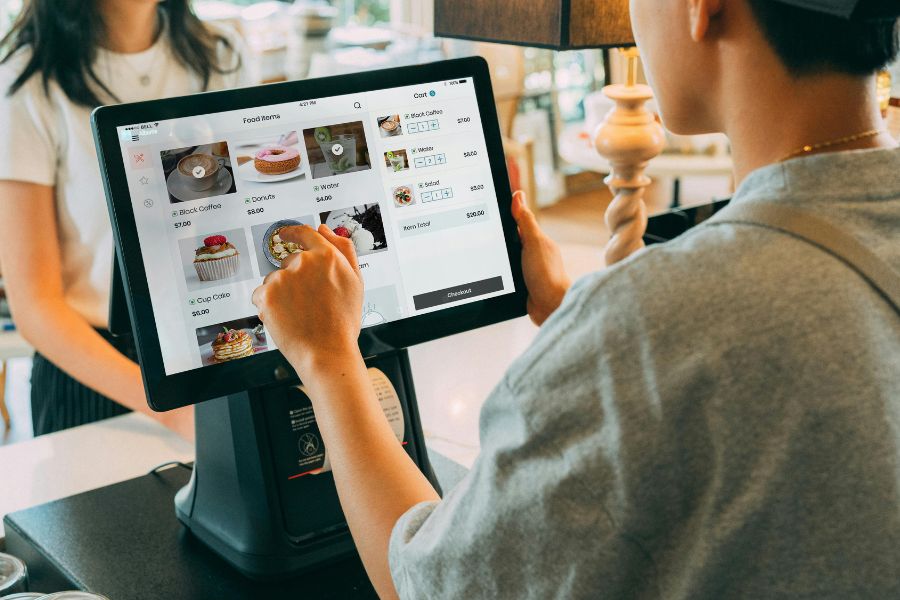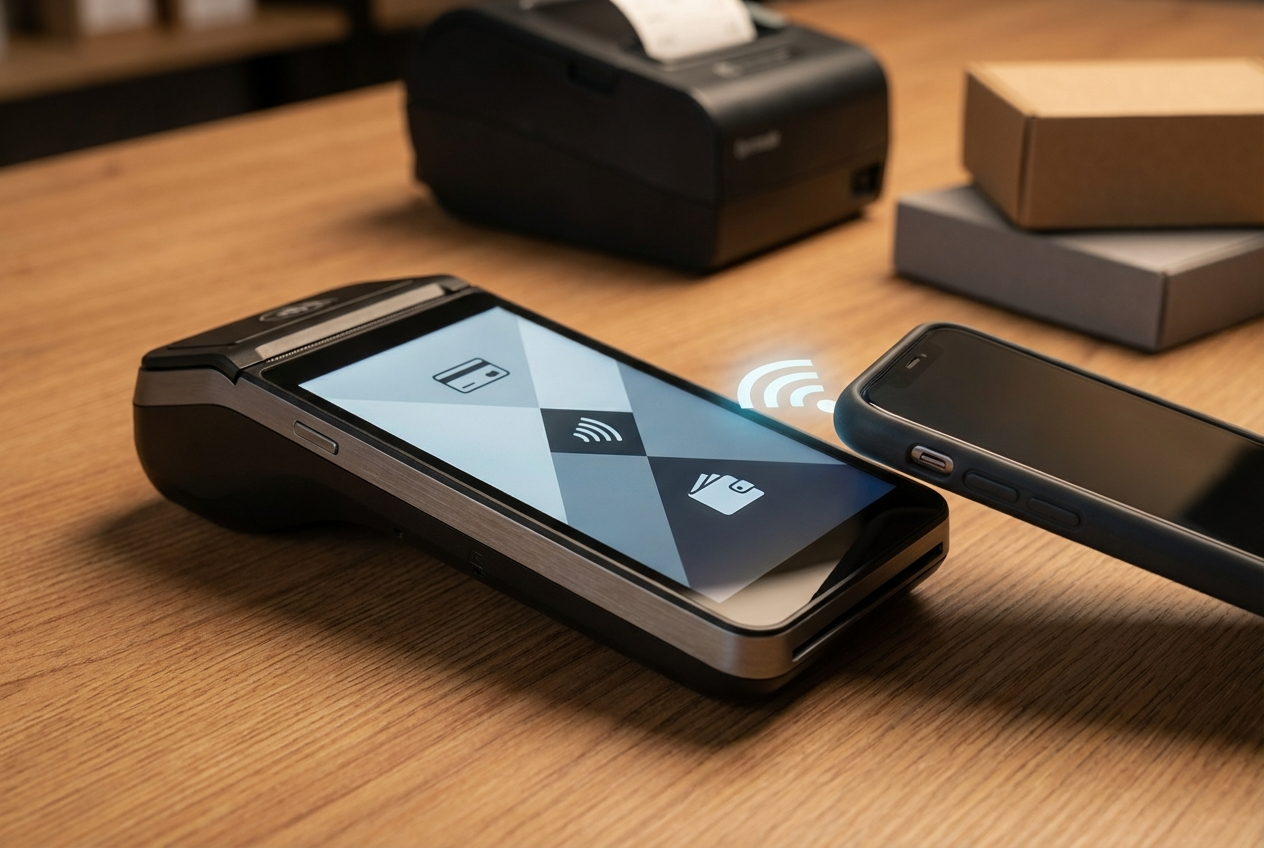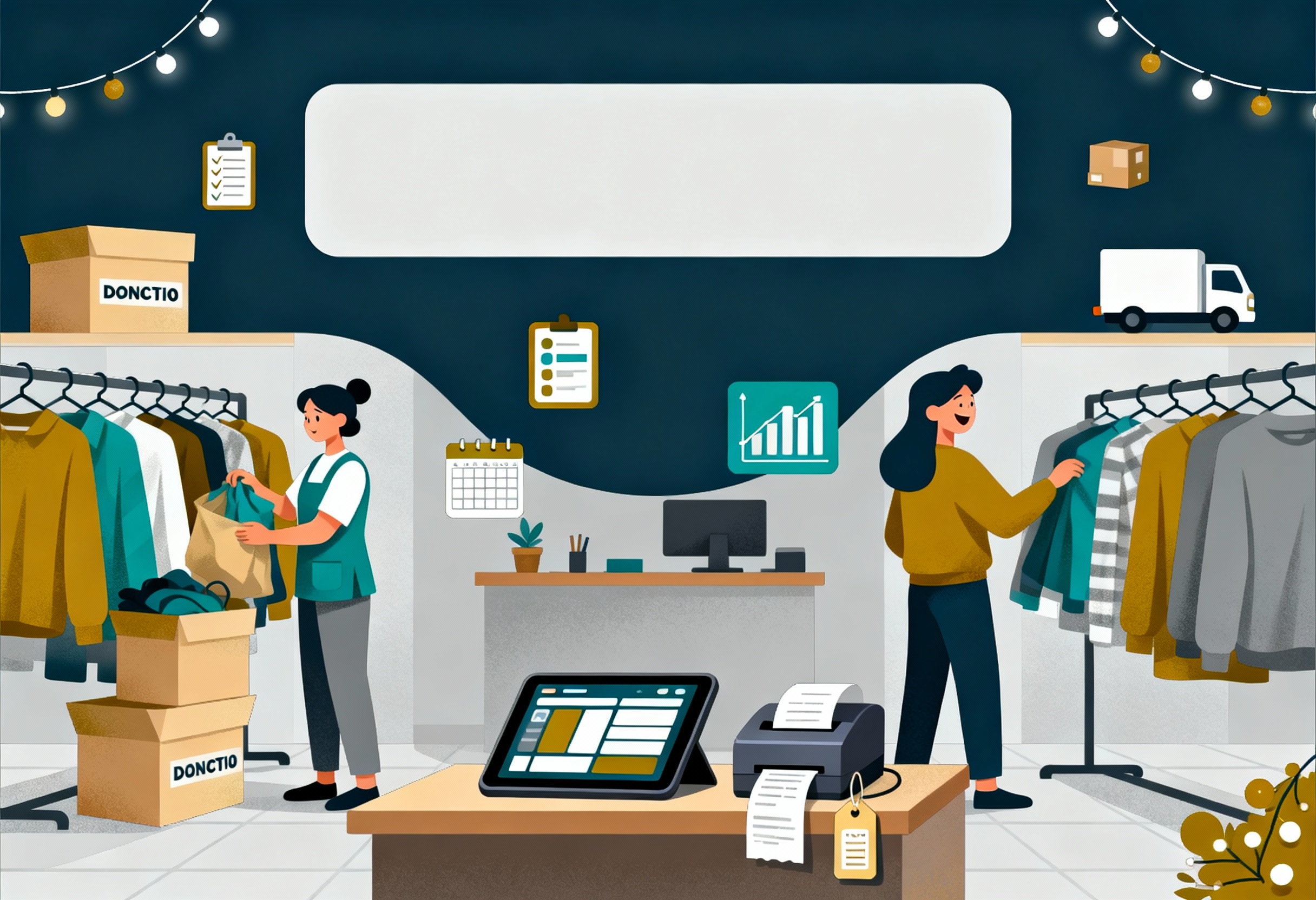Shoppers expect fast checkout and zero out-of-stock signs. Stores want real-time control and clear reports. That’s why the POS and inventory system has quickly become more than just a ‘nice-to-have’ for businesses across Southeast Asia. This guide from ConnectPOS breaks down how it all works, why this trend is taking off, and what it means for retailers looking to stay one step ahead.
Highlights
- POS and inventory systems are driving real-time sales sync, accurate stock tracking, and faster customer service across Southeast Asia.
- Mobile wallets, eCommerce growth, and government digital initiatives are pushing retailers to upgrade from manual tools.
- Local businesses using smart POS tools have improved sales conversions, reduced stockouts, and made daily operations simpler.
Understanding POS and Inventory System
What Is a POS System?
A POS system is where sales happen and transactions are recorded. Think of it as the ‘cash register’, but smarter. Modern POS setups don’t just ring up sales. They also track which item sells, how much was paid, and even what time of day business peaks.
According to McKinsey, the global payments industry processed 3.4 trillion transactions worth about $1.8 quadrillion in 2023 and generated $2.4 trillion in revenue. This shows the scale modern POS software now supports.
POS systems now often run on tablets, phones, or cloud-based terminals. They connect directly to payments, receipts, and sometimes your online store too. This is where a powerful mobile POS makes a difference.
What Is Inventory Management?
Inventory management tracks what’s in stock, what’s coming, and what’s missing. It helps sellers avoid over-ordering or running out of top-selling items. Retailers lost an estimated $112.1 billion to shrink in 2022, equal to 1.6% of sales, much of it tied to poor inventory visibility.
It usually covers purchase orders, warehouse updates, and stock transfers between branches. It also supports basic alerts like low stock warnings or expiry checks for F&B.
What is The Difference between a POS and an Inventory System?
A POS handles the front-end: sales, payments, and receipts. Inventory works behind the scenes: supply, movement, and stock levels.
They solve different problems but feed into the same goal: keeping the business running smoothly.
How do POS and Inventory Systems Work Together?
Together, they give real-time answers to key questions: What sold? How many are left? When to reorder? Statista notes that mobile wallets already power roughly half of global e-commerce checkouts and are growing nearly 15% a year, so transactions and stock data increasingly start and end on a phone.
The sync between both means less manual checking, fewer mistakes, and faster decision-making.
►►► Optimal solution set for businesses: Multi store POS, Next-gen POS, Inventory Management Software (MSI), Self Service, Automation, Backorders
Why Southeast Asian Businesses Are Switching to POS and Inventory Systems
Retail across Southeast Asia is changing fast. Stores aren’t just reacting to trends. They’re rethinking how they run every part of their business.
Surging Cashless Payments and E-Wallet Adoption
Cash is no longer king. From Bangkok to Jakarta, e-wallets and QR payments dominate daily spending. Consumers expect stores to scan, tap, or swipe fast. That means your system has to speak ‘GrabPay’, ‘PromptPay’, and a dozen others fluently.
Bloomberg research cited by NUS shows the Southeast Asian e-wallet market is projected to expand 311% between 2020 and 2025. Bank of Thailand figures reveal PromptPay volumes hit 75.9 million transactions per day in December 2023, a new record.
Stores that still rely on manual cash drawers? They’re missing sales and slowing down lines. A connected point of sale and inventory system makes checkout smoother and records each payment type in real time.
Explosive Growth of E-Commerce and Omnichannel Shopping
Shoppers jump between in-store and online without blinking. They browse on mobile, pick up at a counter, and chat via Facebook before buying. Forbes Advisor reports global e-commerce sales are set to grow another 8.8% in 2024 on a base already above $4 trillion.
Nielsen’s 2023 Annual Marketing Report found that 64% of marketers expect bigger digital budgets this year, mirroring this omnichannel shift.
To meet this, stores need a system that connects everything. A sale online should update the stock in-store instantly. POS that talks to your webstore, inventory, and even marketplaces isn’t a luxury anymore. It’s retail survival.
Demand for Accurate Stock Tracking Across Online and Offline Stores
Too many store owners still say, “We’ll check in the back.” But by then, the shopper’s gone. Across the six largest ASEAN economies, gross digital-payment value hit $806 billion in 2022 and is on track for nearly $1.2 trillion by 2025.
Retailers need a synced system that shows exactly what’s available, where it’s located, and what’s running low. The right POS setup tracks inventory across branches, warehouses, and even pop-up booths, all without messy spreadsheets or guesswork.
Government Push for Digitalization and Tax Transparency
Governments across Southeast Asia are cracking down on tax evasion and pushing digital adoption.
From e-invoicing requirements in Vietnam to GST compliance in Singapore, the rules are changing. A modern point of sale and inventory system helps retailers stay compliant while keeping records clean, transparent, and export-ready when needed.
Mobile-First Shoppers and the Rise of QR Code Payments
People live on their phones. From restaurant tables to weekend markets, scanning QR codes is now the go-to move. If your POS can’t keep up, your customers will move on. Indonesia’s QRIS network logged a 226% year-on-year surge to roughly Rp 229.96 trillion in transactions during 2024, with more than 50 million users on board.
ConnectPOS lets staff take payments from tablets or mobile devices, scan QR codes, and still sync everything to the central system. That flexibility means fewer missed sales and shorter lines.
How Local Retailers and F&B Chains Are Embracing POS Tech
Boutique fashion brands, neighborhood grocers, and cafe chains are swapping old-school cash boxes for smart terminals. Fintech player YouTrip alone has processed close to $10 billion in transactions since launch, according to TechCrunch. This shows consumer appetite for digital payment channels.
Departure Thailand added ConnectPOS to unify their Shopify store and physical shop in Bangkok. Real-time syncing means no double entry, no missed sales, and 20% higher customer satisfaction. Customers now get the same shopping experience whether browsing online or stopping by in person.
PayPorte, with operations in Nigeria and across borders, including Southeast Asia, switched from an unreliable POS to ConnectPOS for its Magento integration. The change led to a 44% increase in sales conversions, with real-time updates and loyalty support across channelsCase studies.
Boosting Revenue, Cutting Costs, and Saving Time
A smarter system doesn’t just track sales. It improves them.
When store owners know what sells best, they double down. When cashiers don’t have to switch tabs to find stock info, queues move faster. Add auto-reorder alerts, sales tracking, and shift reports, and you’ve got a team that runs tighter, faster, better. A POS with report & analytics features makes this process seamless.
Preventing Stock Losses and Planning Smarter Restocks
Missed orders and stockouts kill momentum. Overstock eats cash flow.
An integrated setup helps spot slow movers and top sellers early. That means less guesswork, tighter control, and smarter restocks without the stress. If a product’s trending on your webstore, you’ll know before the shelf goes empty.
COVID-Driven Shift to Contactless and Flexible Fulfillment
Curbside pickup, delivery integrations, online booking. These weren’t ‘extras’ during the pandemic. They were lifelines.
Retailers now expect their POS to support contactless payments, link with delivery platforms, and adapt on the fly. The systems that did this well will keep businesses running while others have paused.
What Makes a POS with an Inventory System Worth the Investment?
Not all POS systems are built the same. What works in New York might not cut it in Penang or Manila. Retailers in Southeast Asia face different needs: language barriers, local payment quirks, and varying tax laws. A smart POS and inventory system has to check more than just the basics.
- Language & Currency Flexibility: Support for Thai Baht, Vietnamese Dong, Bahasa, and other regional standards makes daily use faster and less confusing.
- Local Payments Ready: PromptPay in Thailand. GrabPay in Malaysia. A good POS should accept these ‘as-is’ without third-party workarounds.
- Scalable Setup: Start with one store. Grow to ten. Your system needs to keep up without a full replacement.
- Tax Compliance: Built-in GST, VAT, or electronic invoicing saves trouble when tax season comes.
- Hardware Friendly: POS systems should work with your current printers, barcode scanners, and cash drawers, no expensive upgrades required.
- Cloud or On-Premise: Some prefer full control. Others want everything stored online. A good provider lets you choose.
This isn’t just about tech. It’s about whether your system works ‘on the ground’ where your team and customers live.
Getting Started with an Advanced POS Featuring Inventory System in Southeast Asia
Jumping into a new POS and inventory system isn’t something to rush. The tech needs to match how your business actually runs, from the front counter to the stockroom.
We’ve broken it down into clear steps to help you make the right call:
- Assess your current setup: Understand what tools you’re using now (manual logs, Excel, outdated POS) and what’s not working.
- Identify your business needs: Consider sales volume, number of outlets, inventory complexity, payment types, and online/offline sales mix.
- Choose the right provider for Southeast Asia: Look for solutions that support local payment methods (PromptPay, GrabPay), local tax settings, and regional languages.
- Check for integration compatibility: Make sure the POS can sync with your eCommerce platform, accounting tools, loyalty apps, and warehouse systems.
- Prioritize ease of use and training: Select a system that’s simple to set up, with training and support available in your country.
- Review pricing and scaling options: Understand hardware costs, monthly software fees, and whether the system can grow with your business.
- Plan for setup and onboarding: Work with the provider on setup, product imports, receipts, and staff training to get started smoothly.
- Test before you commit: Try a free demo or pilot at one location to see how well the system fits your workflow.
ConnectPOS – The All-in-One POS Including Inventory System Built for Southeast Asia
ConnectPOS is an all-in-one, cloud-based point of sale and inventory system built for modern retailers in Southeast Asia. Designed for speed, flexibility, and growth, ConnectPOS powers businesses across industries, from apparel to electronics stores to F&B, helping them sell in-store and online with confidence.
Whether you’re selling from a single counter or across 100 stores, ConnectPOS keeps your sales and stock synced in real time, ready to scale as you grow.
Key reasons Southeast Asian businesses rely on ConnectPOS:
- Real-time Inventory Synchronization: Updates stock automatically across online and offline channels, including Shopify POS, Magento POS, and WooCommerce POS.
- Cloud-based With Offline Mode: Works anywhere, anytime, even without an internet connection. Sync data once you’re back online.
- Multi-store & Multi-warehouse Support: Manage multiple outlets, warehouses, and even regions from one central dashboard.
- Omnichannel Order Management: Handle in-store pickup, home delivery, and click-and-collect from one POS system.
- Flexible Checkout Options: Accept cash, cards, QR payments, digital wallets like GrabPay, PromptPay, and more.
- Powerful Promotions Engine: Set up custom promotions, discounts, loyalty campaigns, and bundled offers directly in the POS.
- Built-in Customer Profiles and Integratable Loyalty Tools: View purchase history, apply rewards, and offer targeted perks that keep shoppers coming back.
- Customizable Tax and Receipt Settings: Adapt to local tax rules and customize printed or digital receipts to fit your brand.
- Multi-language & Currency Support: Ideal for cross-border businesses and multilingual teams.
- Advanced Reports & Analytics: Track sales performance, inventory status, and customer behavior in real time.
- Mobile POS and Tablet-friendly Interface: Use Android tablets or mobile devices for pop-ups, markets, or on-the-go sales.
From Bangkok’s high streets to boutique stores in Ho Chi Minh City, ConnectPOS helps Southeast Asian retailers cut down manual work, prevent stockouts, and deliver faster, more reliable service.
FAQs: POS and Inventory System
1. What is the difference between a POS system and an inventory system?
A POS system handles sales and payment processing. An inventory system tracks stock levels and movement. A combined point of sale and inventory system does both in one platform, making business operations smoother and faster.
2. Why is the POS and inventory system trending in Southeast Asia?
Because businesses need to keep up with fast-growing digital payments, mobile shopping, and real-time stock control. A smart point of sale and inventory system helps them serve customers better and avoid running out of stock.
3. Can a POS and inventory system work offline?
Yes. Many cloud-based systems, including ConnectPOS, have an offline mode. It keeps transactions running even without internet, then syncs data once you’re back online.
4. Is it expensive to set up a point of sale and inventory system?
Not really. There are scalable options for small shops to large chains. Monthly plans vary, and cloud-based systems often cost less upfront than traditional setups.
5. What features should I look for in a point of sale and inventory system?
Look for real-time inventory sync, mobile payments, e-wallet support, sales reporting, loyalty tools, and integrations with your eCommerce POS platform. The right system will grow with your business and make daily tasks easier.
Final Thoughts
A smart POS and inventory system doesn’t just record sales. It keeps your stock updated, your team on track, and your customers coming back. That’s why more Southeast Asian retailers are making the switch.
From handling QR payments to syncing orders across online and offline stores, the right setup gives you speed without the stress. And if it works in your local language, with your local taxes, even better. ConnectPOS brings all that together in one place. It’s fast, reliable, and built for how retail works in this region. Ready to simplify how you sell? Contact us to get started.
►►► Optimal solution set for businesses: Shopify POS, Magento POS, BigCommerce POS, WooCommerce POS, NetSuite POS, E-Commerce POS



